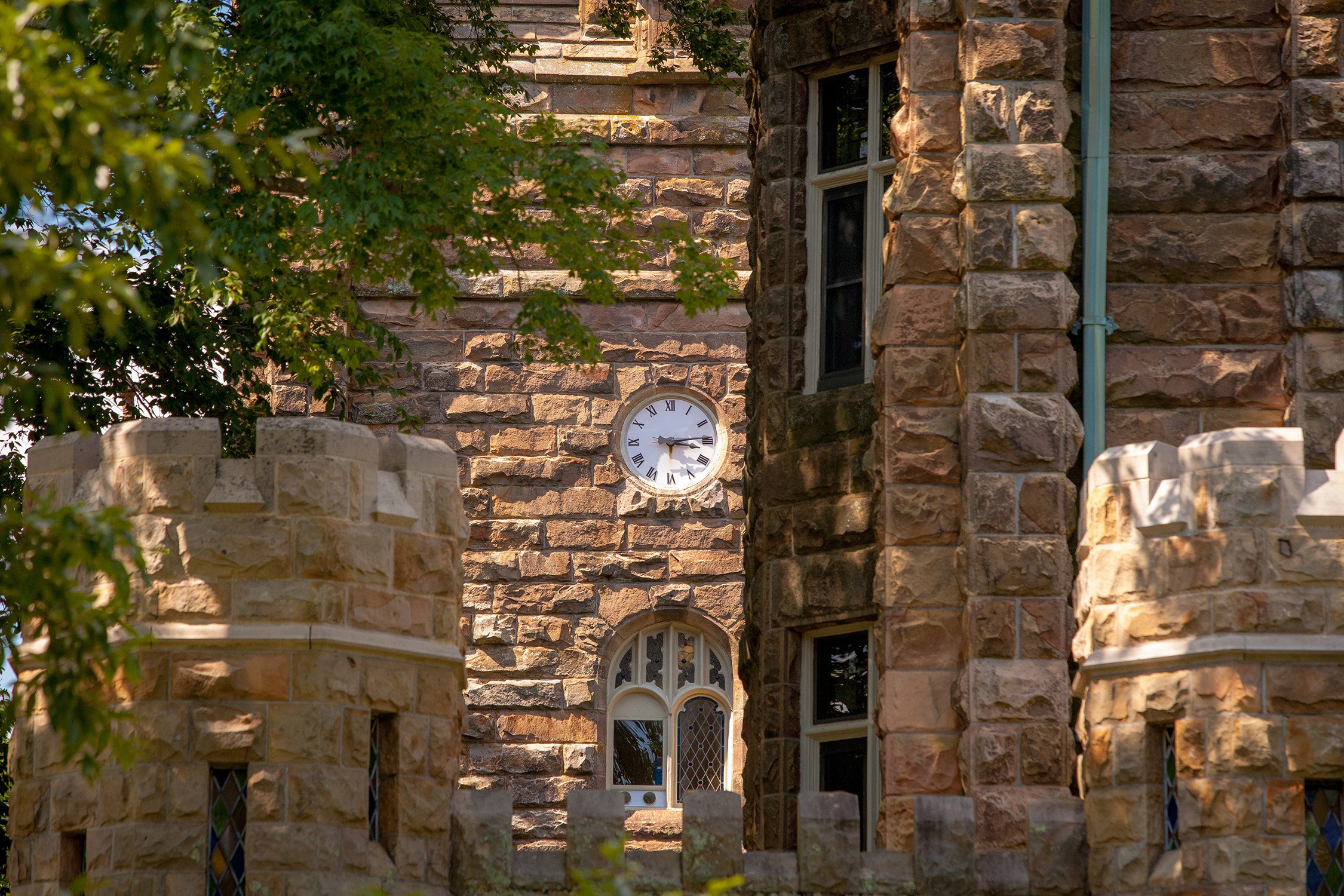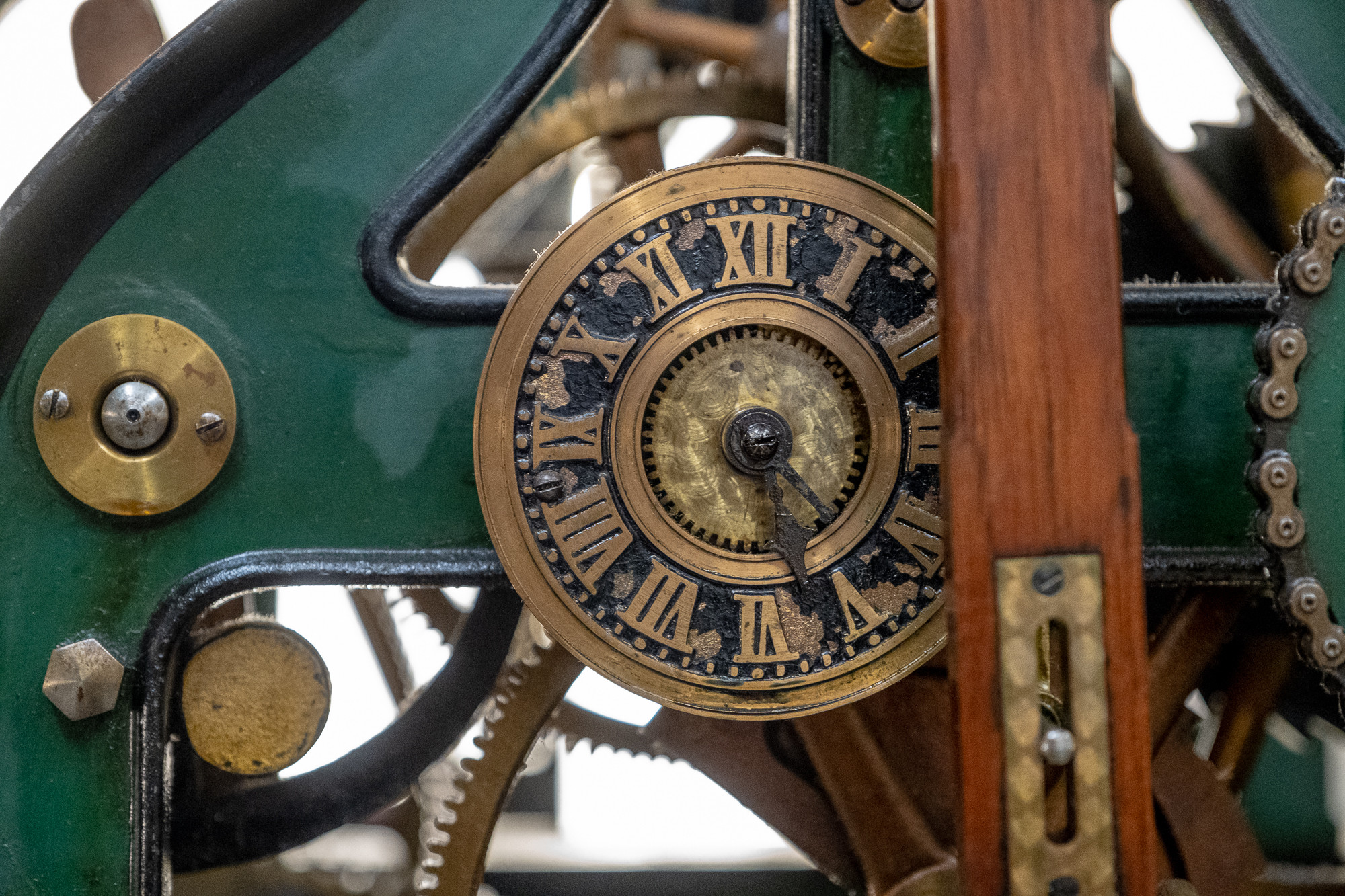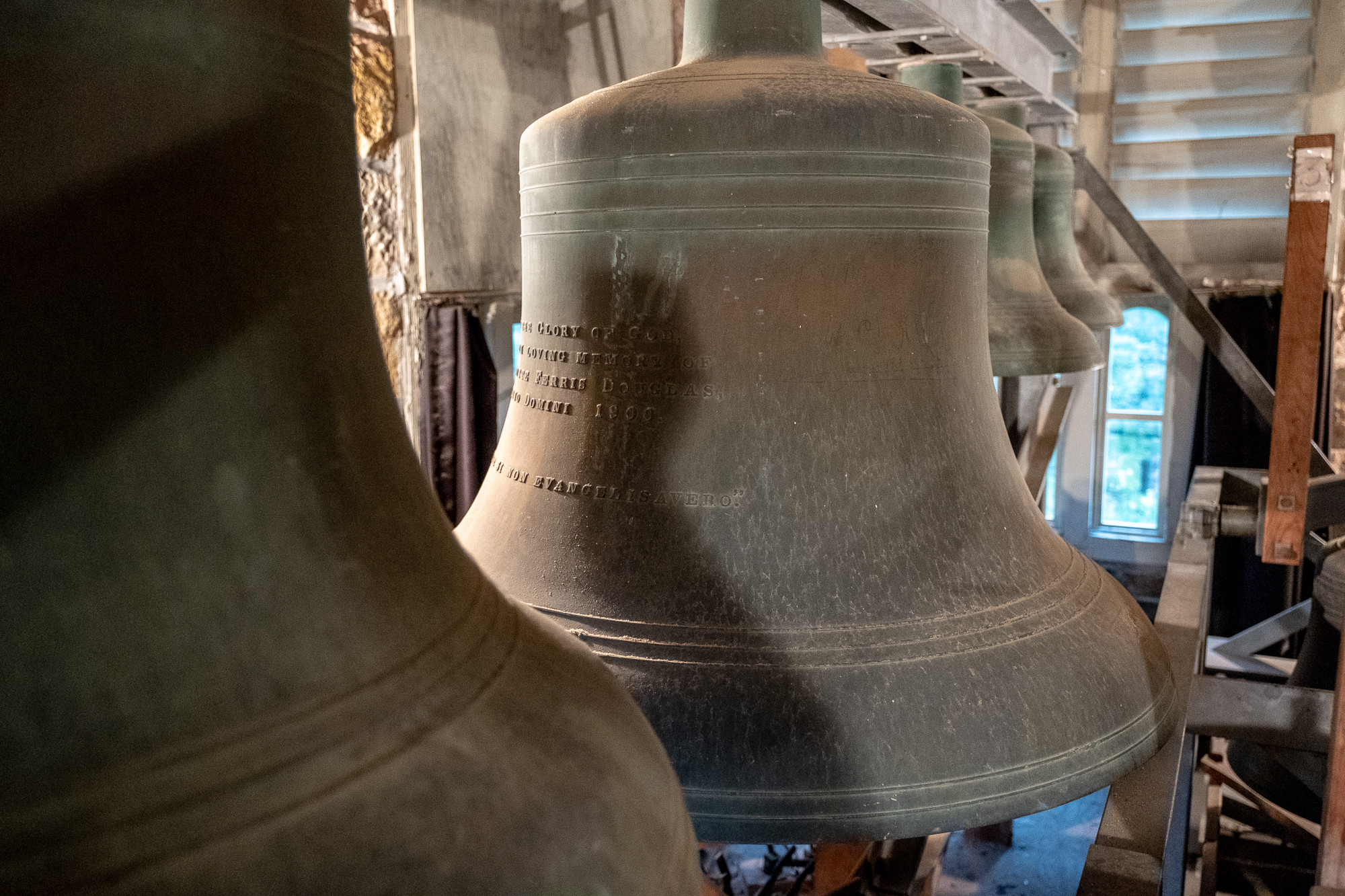The Douglas Clock
Breslin Tower
Finished in 1886 and modeled after the tower of Magdalen College Chapel at the University of Oxford, Breslin Tower was built with donations from Thomas and Elizabeth Breslin, of Waterford New York, in memory of their nine-year-old daughter, Lucy. Breslin Tower forms the entrance to Convocation Hall.
Clock Donor
George William Douglas of Tuxedo Park New York, in memory of his mother, Charlotte Ferris Douglas of Rochester, New York, on the 59th anniversary of her marriage to William Bradley Douglas, June 3, 1900.
Manufacturer
Seth Thomas Clock Company #16 with chime and strike on February 14, 1900

Modifications
Electric winders were installed in the 1930s. The clock was disassembled and re-installed from 2000 through 2003.
Clock masters / Conservators
- 1900 - 1950s: University Physical Plant Services serviced and wound the Douglas clock until sometime in the 1950's when Professor Fritz Whitesell assumed the role of conservator.
- 1950s - 1980s: Professor Fritz Whitesell, assisted by Paul Engsberg
- 1980s – 2011: Paul Engsberg, assisted by Will Mills and Keith Henley
- 2011 – Present: Keith Henley
ABOUT The University Clock
 The University Tower Clock is located at the top of Breslin Tower, adjacent to Convocation Hall, on University Avenue. It is a Seth Thomas model No. 16 manufactured in February 1900 and installed on June 3, 1900. The bells were cast in 1899 by the Meneely Foundry of Troy, New York. The clock strikes the hour and sounds the Westminster Quarter marking the hour and quarter hour. The three clock faces are easily read from the ground by those passing below. The clock’s striking has kept the campus on time for more than a century.
The University Tower Clock is located at the top of Breslin Tower, adjacent to Convocation Hall, on University Avenue. It is a Seth Thomas model No. 16 manufactured in February 1900 and installed on June 3, 1900. The bells were cast in 1899 by the Meneely Foundry of Troy, New York. The clock strikes the hour and sounds the Westminster Quarter marking the hour and quarter hour. The three clock faces are easily read from the ground by those passing below. The clock’s striking has kept the campus on time for more than a century.
The following brief literary creation attests that the Douglas Clock (a.k.a. the Library Clock, Breslin Tower Clock, Convocation Hall Clock, and University Clock) is a continuing memory for each graduating class.
On his visiting the campus late in his life, Thomas Dabney (C’ 1905), recalled:
“More than sixty years have passed since Breslin’s hortation had made me jump while preparing for my degree, and there were these same bells talking to me in the same old tones, a symbol of Sewanee’s permanence and the clanging vigor of its ideals and purposes.”
 The Seth Thomas No. 16 keeps time with a swinging pendulum that is weight-driven. Originally, the weights that drove the clock were attached to long ropes that hung in the corners of the tower and descended during the week to the basement five floors below. Once each week, the weights were wound with a large wooden-handled clock key. In the 1930’s, electric motors were installed to raise the weights. These weights are now installed in three stacks – one drives the clock pendulum, one drives the hour striking, and one drives the Westminster chimes. The electric motors are activated by mercury switches.
The Seth Thomas No. 16 keeps time with a swinging pendulum that is weight-driven. Originally, the weights that drove the clock were attached to long ropes that hung in the corners of the tower and descended during the week to the basement five floors below. Once each week, the weights were wound with a large wooden-handled clock key. In the 1930’s, electric motors were installed to raise the weights. These weights are now installed in three stacks – one drives the clock pendulum, one drives the hour striking, and one drives the Westminster chimes. The electric motors are activated by mercury switches.
 Since 1900, the clock has stopped only three times – once for the installation of the electric motors that raise the weights (1930s), once for the repair of the hands and a brass bushing on February 14, 2000, exactly 100 years after the installation, and once for the relocation of the clock when the ring of eight Bentley change-ringing bells were installed in 2004.
Since 1900, the clock has stopped only three times – once for the installation of the electric motors that raise the weights (1930s), once for the repair of the hands and a brass bushing on February 14, 2000, exactly 100 years after the installation, and once for the relocation of the clock when the ring of eight Bentley change-ringing bells were installed in 2004.
Tours of Breslin Tower are scheduled for Family Weekend, Homecoming, the Fourth of July, and student admissions events. Other tours may be arranged upon request by contacting TheClock@Sewanee.edu.
When you visit Breslin Tower, have a seat on the stone bench out front and wait. The Westminster chime you will hear is a prayer to take you through the day. The chime first chimed at the Church of St. Mary the Great in Cambridge, England. Four bells every quarter adding up to sixteen chimes on the hour. This is the prayer:
All through this hour
Lord be my guide
That by thy power
No foot shall slide.

